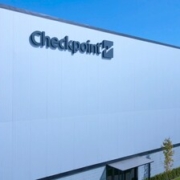India Label Industry Trends: Mid-Web, RFID and Automation
India’s label industry is no longer a quiet growth story. Press manufacturers, consumables suppliers, and converters alike are pointing to the region as one of the most active markets in 2025, thanks to rising demand for packaging, rapid technology adoption, and investments in infrastructure that support production at scale. Label & Narrow Web pointed out India’s potential in 2016. Today, the market is expanding at an even faster pace. Mid-web presses, RFID-enabled smart labels, and increased automation are at the center of this momentum.
Mid-web presses gain traction
For years, India’s converters have relied on narrow web to power growth in self-adhesive labels. Now many are looking at wider platforms to diversify into applications such as shrink sleeves, wrap-arounds, and short-run flexible packaging. Machines in the 560 to 670mm range give converters that opportunity while retaining the quicker changeovers and inline finishing familiar to label producers.
The trend was evident at Labelexpo India 2024, which saw its biggest turnout yet. At the event, Multitec showcased its S2 mid-web flexo press designed for both labels and flexible packaging. Nilpeter has underscored its commitment to India, opening a new technology center while highlighting its FA-26 platform, a 670mm press positioned directly at the labels-to-packaging crossover. According to suppliers, converters are pursuing wider presses not simply to add capacity but to participate in growth categories that demand larger formats.
This shift comes against the backdrop of a packaging market in India projected to grow at more than 10% annually through 2030. Self-adhesive labels remain a strong segment, but the opportunity to branch into new packaging formats has made mid-web one of the most talked-about equipment investments of the past 12 months.
Indian RFID moves into production
Another development shaping the Indian label market is the rise of RFID and smart labeling. Avery Dennison recently opened its first RFID inlay and label manufacturing facility in Pune, its largest such site globally, underscoring expectations that India will play a leading role in the next wave of adoption.
With global retailers and logistics providers standardizing around RFID for authentication and tracking, converters that can produce these applications locally will have a distinct advantage. While the market is still early, the presence of manufacturing capacity inside India means converters will no longer be dependent on overseas supply for inlays. For brand owners and packaging buyers, that could accelerate adoption across categories like pharmaceuticals, apparel, and FMCG.
Automation and digital adoption
Alongside capacity expansions, converters are steadily upgrading workflows to balance efficiency with agility. Hybrid strategies are common: flexo presses remain the workhorses, but digital and automation are increasingly used to address short runs, personalization, and SKU proliferation.
Recent installations highlight this shift:
Suppliers are reinforcing these moves with materials, as well. Flint Group recently opened a Gujarat facility producing water-based inks for board and energy-curable inks for narrow web. Local ink and coating capacity further reduces lead times and supports adoption of new curing technologies, too.
Who’s betting on India?
It is not just converters driving the story. Suppliers are making sustained commitments to the region:
Industry gatherings echo that sentiment. PrintPack India 2025 brought together suppliers across flexo, digital, finishing, and materials, underscoring the complexity and scale of the market. The upcoming LMAI Conference in Udaipur is expected to draw hundreds of delegates with sustainability and automation at the forefront. Both events reinforce that India is not a future opportunity but a current focal point for the global label supply chain.
Incentives, risks, and adaptation
Policy has also shaped the India’s label industry. As of March 2025, India’s Production-Linked Incentive (PLI) schemes had led to approximately about $19 billion USD in manufacturing investment and created about 1.15 million jobs. While label equipment doesn’t typically qualify directly, converters serving FMCG or electronics packaging might benefit indirectly through ancillary supply chains. Although the MEIS was phased out in 2023, it has now been succeeded by programs like RoDTEP, still providing relief to firms that export labels or packaging (especially those targeting foreign markets).
Yet not all programs have rolled out smoothly. Analysts note that some PLI disbursements have lagged and logistics infrastructure still poses challenges. For converters, the practical response is to adapt by investing in technology and workflows that increase resilience, rather than waiting for subsidies to arrive. This dual narrative of incentive and risk mirrors how global suppliers are approaching the Indian label indsutry: opportunity is real, but execution demands pragmatism.
What converters should consider
Given this landscape, converters focusing on technology and operational resilience rather than expecting policy timelines to align may come out on top. Here’s how converters can adapt strategically:
- Evaluate incentive adjacency, not eligibility: If you’re supplying rigid packaging or electronics-adjacent sectors, even if your equipment doesn’t qualify directly, you may benefit indirectly from wider ecosystem investment.
- Optimize workflows: Invest in press versatility, digital and hybrid workflows, and local consumables that can offset volatility in subsidy timelines.
- Test export strategies: With MEIS replaced by RoDTEP, explore whether export credits or duty scrips are available for your product categories.
These steps won’t eliminate systemic risks, but they position converters to stay agile in a changing environment where policies are shifting and revenues are driven by speed and flexibility. Converters that adapt will find themselves aligned with how brand owners now buy packaging: prioritizing variety, traceability, and speed. In India’s label market, the only thing moving faster than the presses may be the expectations of the brands they serve.
Explore more about how automation is shaping the label industry’s next evolution →
Source link









Leave a Reply
Want to join the discussion?Feel free to contribute!